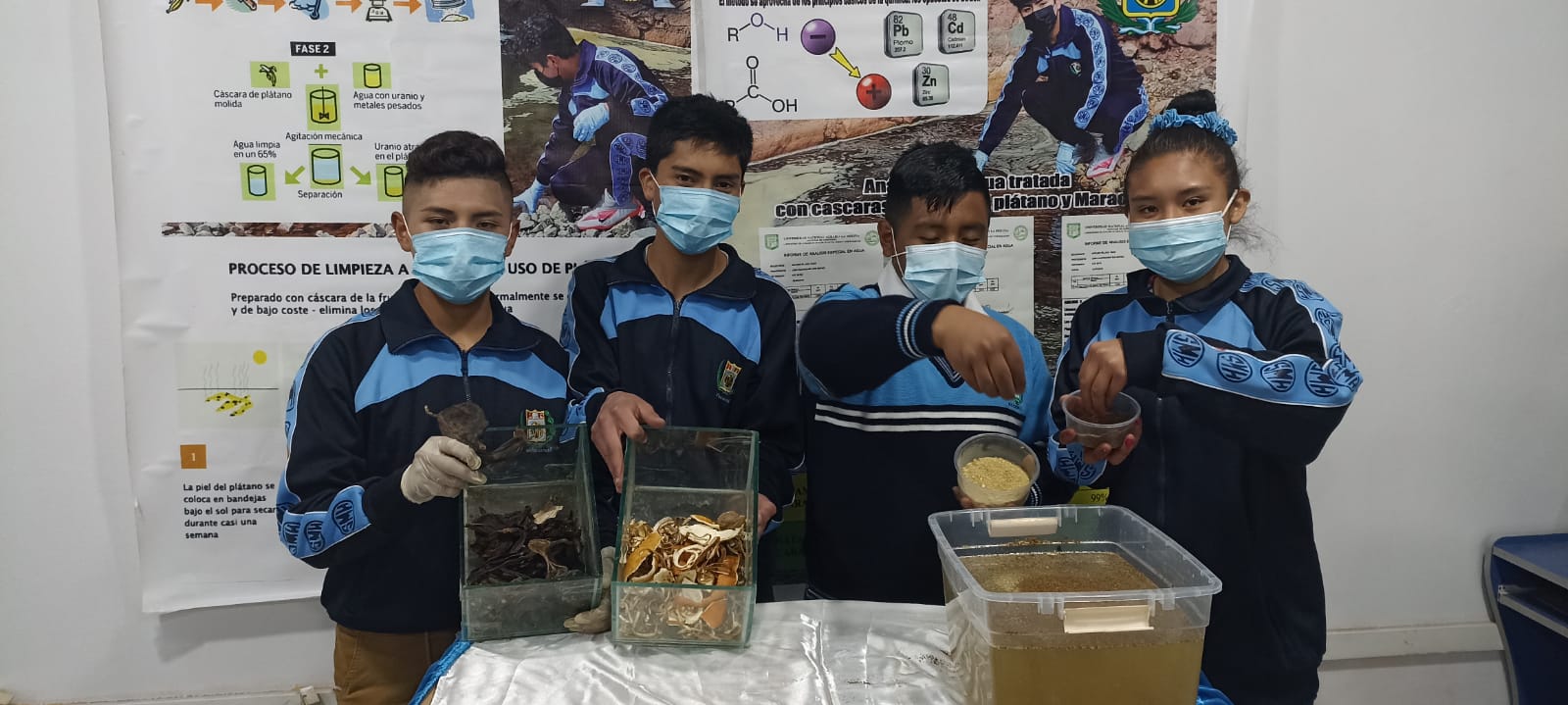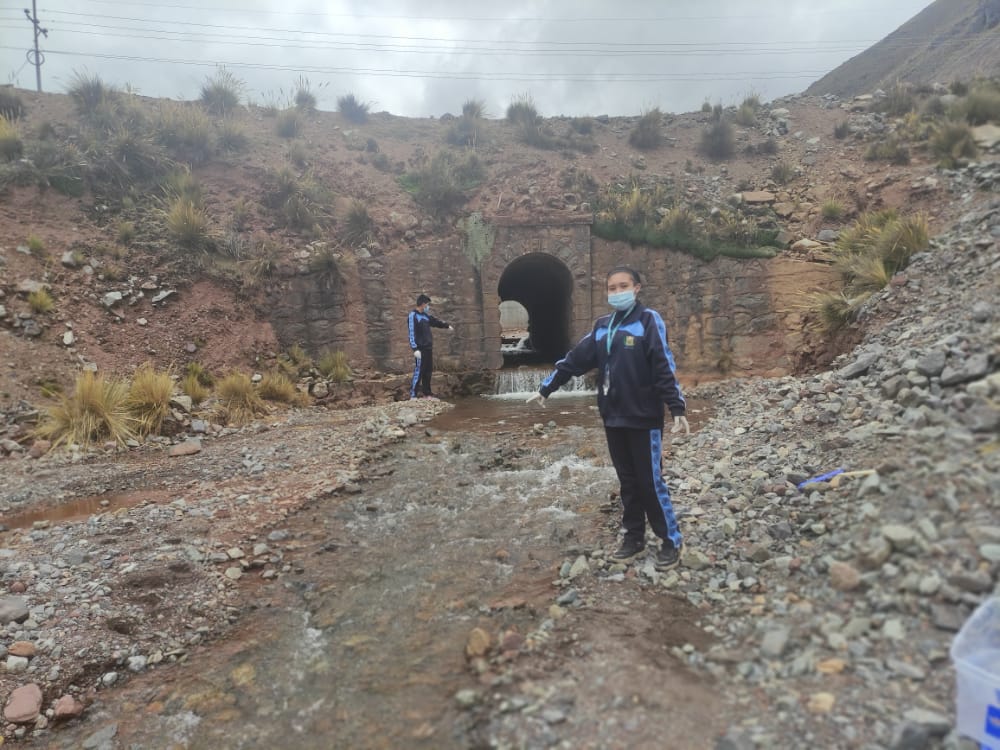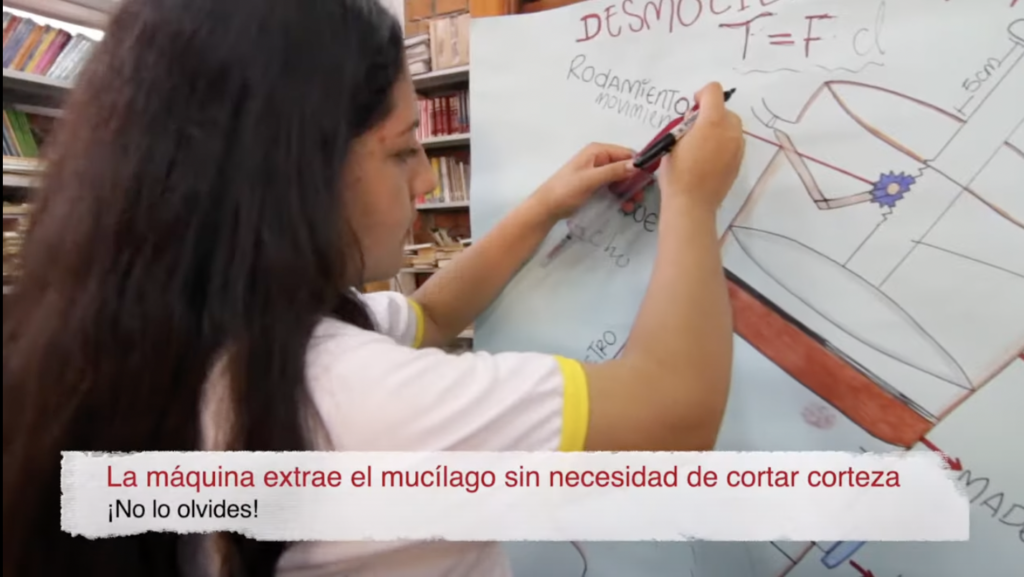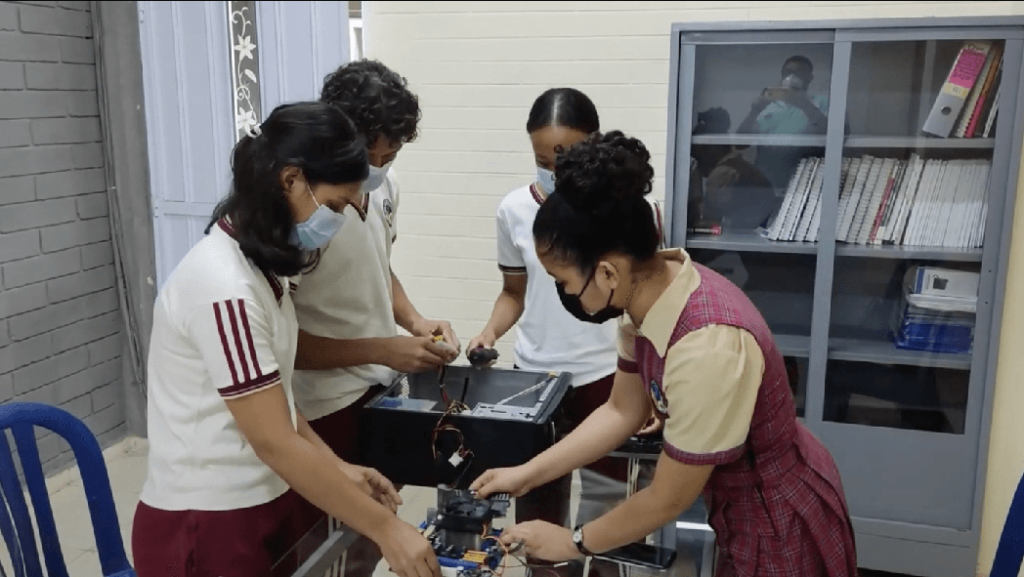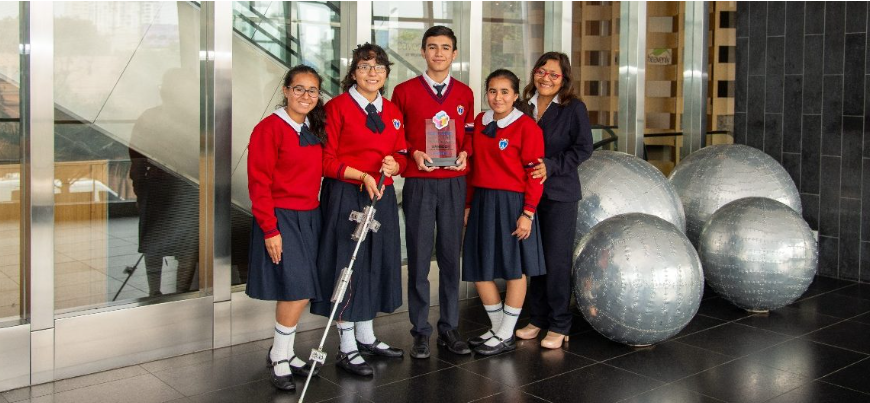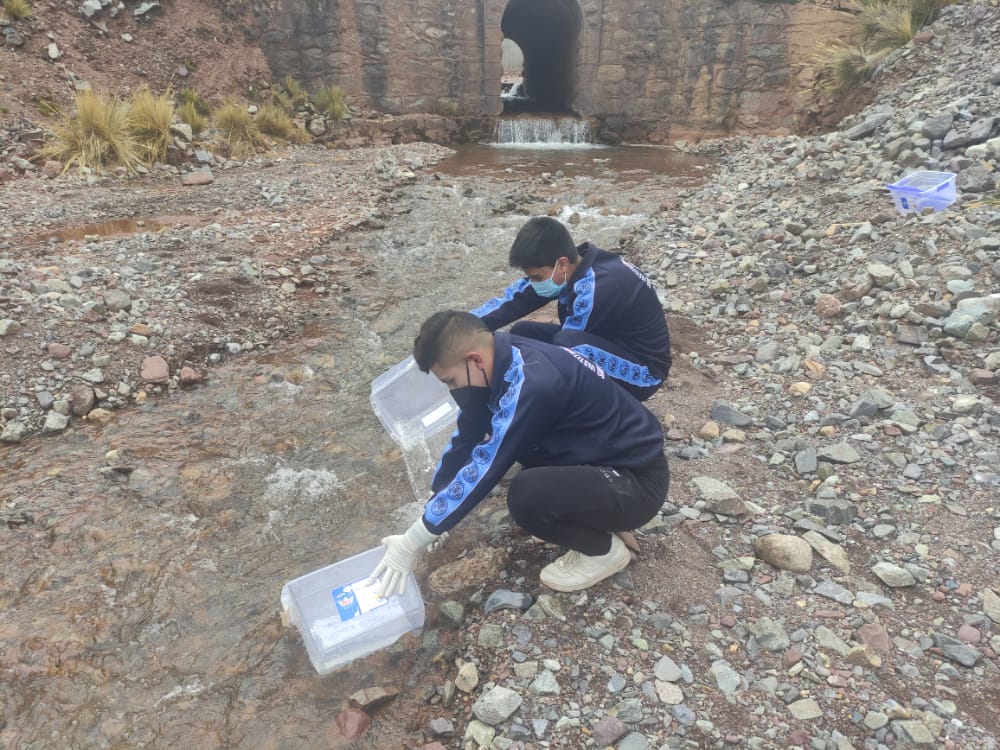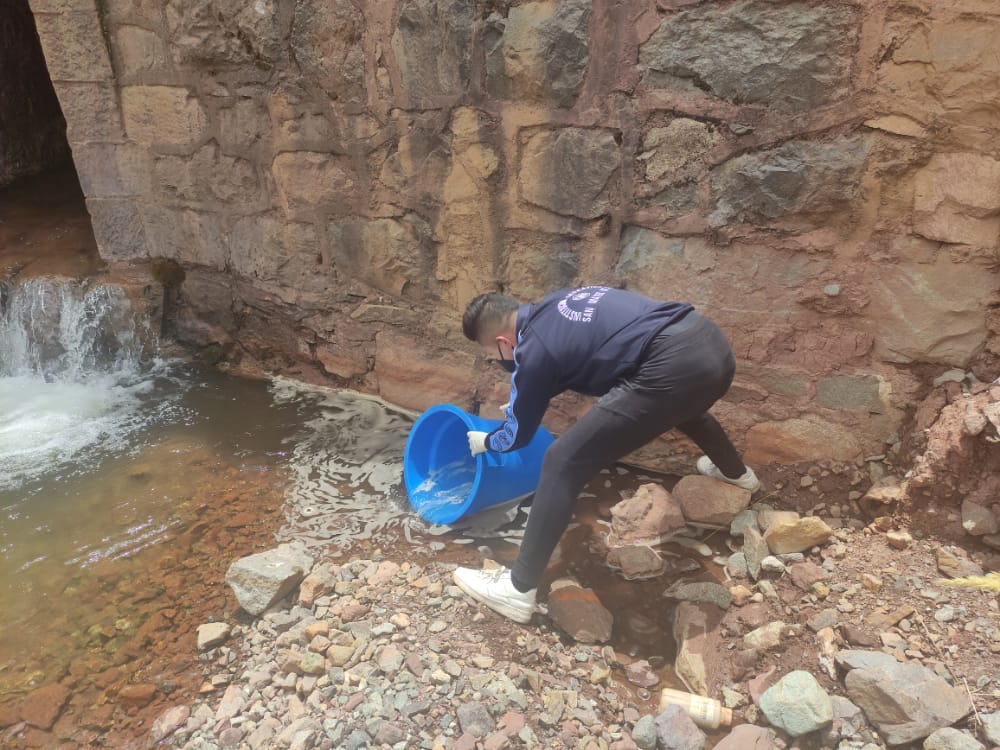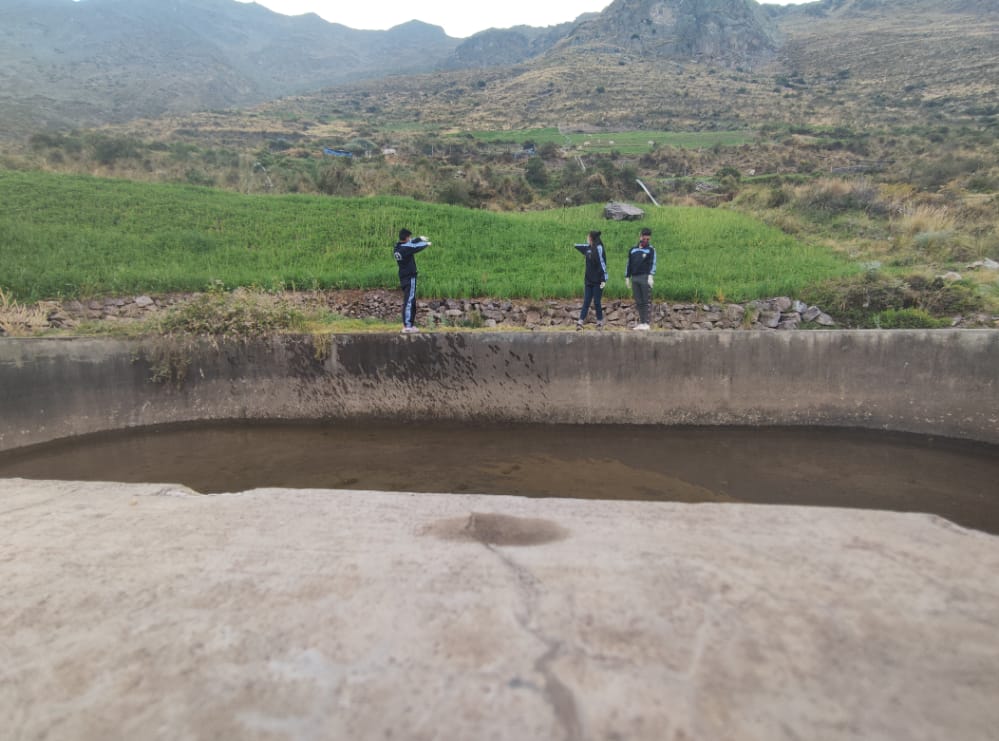Project gallery

Biozono: healing the waters of San Mateo
Report sent by the Teacher
Miguel Angel Sandoval de la CruzSchool
San Mateo de Huanchor San Mateo, Huarochiri, Lima Províncias, PeruProject team composition
Ángel Jorge Vicharra Capcha, Diego Armando Hinojosa Garcia de Calderon, Jarib Wilfreso Enciso Almerco, Valeria de Fátima Orihuela Solano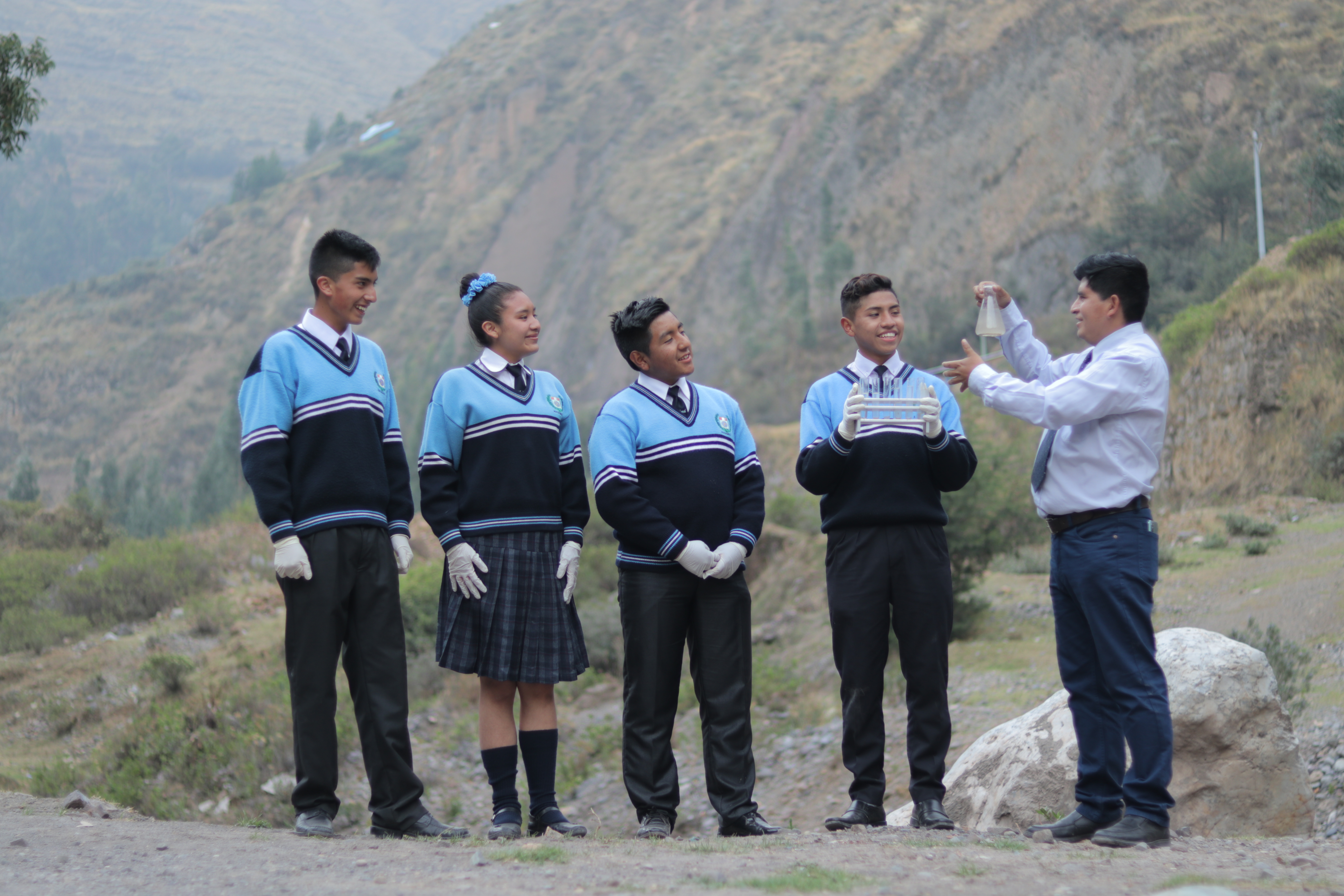
Age of students
15 to 17 years oldOther areas of knowledge
Social Sciences or SociologyProject duration
For more than a yearSoft skills
Collaboration, Communication, Creativity, Critical thinkingSTEM areas
Engineering, Math, Sciences, TechnologyEmpathy: learning from people’s values and needs
Project objective, problem to be solved, and main actions
The project’s main objective was to decontaminate the heavy metal waters of the Millotingo River in San Mateo, using organic waste such as bananas and orange peel to benefit the region’s farmers.
The main question we wanted to answer was how to cure the waters of the Millotingo River with banana and orange peels using the Bioremediation technique? The community’s problem was that its waters were contaminated by heavy metals such as lead, cadmium and zinc, affecting their crops. The challenge was identified through direct interviews with the community, to assess how it was affected by this situation.
Biozono was born from the observation of the environmental problems of water, in the community of Parac Millotingo. It was observed that mining tailings reach the river, causing changes in the soil and in agricultural products such as alfalfa, potato and oca. A water quality study showed that it contains heavy metals (lead, cadmium, zinc) above permitted levels, which indicates that it is not suitable for agriculture. As the water from this river is necessary for agriculture (the main economic activity and the generation of products for human consumption directly by the residents of Parac, Millotingo), when significant concentrations in mg/l of metals are found, the river produces diseases such as cancer, according to the WHO. Given this observed environmental problem, we can say that it was necessary to implement an alternative technological solution that would allow the recovery or remediation of the community’s water. In this sense, it was necessary to review water quality standards. This project has been working since 2018 with several colleagues and has been getting stronger
To plan the project, it was necessary for the group to meet outside class hours in a science space called the Science Club, where students analyzed and debated problems in their community as a team to solve them through innovative proposals. We identified the problem of water contamination by going out into the field to make observations and analyze the problem. Every week we planned the work to be done as a team.
The project was a collective construction, between the students and me.
Definition: better understanding of the challenges
Deepening into the issue and involvement of the school and local community
It was possible to perceive when analyzing the problem, seeking information about the place, and after some interviews were conducted with the local authorities.
Until now, it was possible to identify the level of contamination by heavy metals in percentages, through the analysis of the water of the Millotingo River. It was possible to adsorb these residues using the combination of banana and orange peels, which has a “water cure” effect, verifying the result through a special pre- and post-treatment analysis of the technique.
In the first phase, where it was cured in 20 liter containers, it was possible to train farmers to use this technique, raising awareness and obtaining their approval and continuing to expand the project to a larger scale that continued its course in more than 100 cubic meters, benefiting 700 farming families.
The school community got involved through the motivation of the science club “Joel Isidro Arce” to conduct a project in favor of the environment, where students participated with their contributions; parents in financial and management support giving full support to the project.
The Biozono team founded the project in the municipality of San Mateo, before the authorities obtained funding to obtain water and mobility analysis. The Peasant Community of San Mateo gave us support to heal the waters.
Ideation: developing creative solutions
The development of the solution
- Step 1: Observation: Water contaminated by heavy metals was identified, which harms farmers who use it for their crops.
- Step 2: Water analysis: for experimentation and demonstration, 1 liter of water was used as a sample for analysis in the UNALM laboratories. The results showed the presence of heavy metals: lead 1,012 mg/l, cadmium 2,016 mg/l, zinc 3,120 mg/l, with values above the limits allowed by MINAM – WHO.
- Step 3: Search for background and information that support this study, such as scientific articles and theses.
- Stage 4: Collection of orange and banana peels, for dehydration at room temperature and obtaining the powder, in a manual mill.
- Step 5: Performance tests of banana and orange powder: 3 tests were performed by trial and error, with 5 gr/liter of water, 10 gr/liter and 20 gr/liter. In test 1 it was possible to adsorb 75%; in test 2 99% and in test 3 99% lead, cadmium and zinc. In each test, the verification was with water analysis measuring the amount of heavy metals, determining the use of 10gr. per liter of water for this project.
- Step 6: Curing Process in Water: The bioadsorption process starts in 2 hours and reaches its maximum in 24 hours, the orange contains pectin and mucilage, the banana cellulose and lignin, which, in contact with H2O, form chelates. These functional groups have cations and heavy metals have anions; the interaction that occurs adheres forming a new galacturonic chain, replacing ethylene, hydroxyl and carboxyl acetate by lead, cadmium and zinc, achieving the bioadsorption of these metals.
- Step 7: Verification of the results: After 24 hours, a liter of water was extracted to take them to the UNALM laboratory. The results obtained were: (lead <0.001 mg/l.), (cadmium <0.005 mg/l (zinc 0.040 mg/l.), concentrations below the permitted limits.
- Step 8: Analysis of the percentage data: To verify the functioning, 3 bioadsorption tests were conducted combining the peels

- Stage 9. Conclusions: The combination of orange and banana peels, due to their chemical properties (composed of pectin and cellulose) had better effects, managing to reduce the levels of lead, cadmium and zinc. The use of 10gr of banana and orange peel powder per liter of water is more effective in absorbing heavy metals; the bioadsorption time is most effective in 24 hours, where it reaches its maximum adsorption power. This is proven with the results obtained in the experimentation and the scalability of the project is viable, as the biozone works from one liter of water to more than 100m³.
- Step 10. Implementation of the alternative technology solution
– Initially, each family received a fountain of 20 liters and 200 gr. of banana powder and orange peel to decontaminate water from heavy metals.
– Currently, 1,100 liters of water per 10 kilos of powder have been implanted in tanks.
– It will be implemented in a 100 m³ lagoon, with the support of strategic allies, where each farming family will deliver 1 ½ kg of powder for execution on a larger scale and will be trained to use the biozone technique.
Prototype: making ideas tangible
The construction of the prototype
Although other investigations have been made where the peels were used individually, the Biozono team determined a specific formula for the bioadsorption of metals, managing to use the combination of two organic residues: banana and orange peels, which generated greater efficiency in the healing process. This new recipe was selected by trial and error; Several combinations were used and the best results were obtained with the combination of 10 g of shell powder per liter of contaminated water. This combination has a higher metal adsorption power. Another factor is the maximum time of bioadsorption of the metals in 24 hours. The scientific principles that support the results are the antecedents and scientific articles conducted by other researchers who use only 5 grams of powder from a single fruit and in 2 hours they adsorb metals.
- Step 11. Impact
Environmental impact of the alternative technological solution: Contributes to the recovery of water contaminated with heavy metals.
Economic impact of the alternative technological solution: Contributes to the maintenance of the family economy and the community through the commercialization of agricultural products.
Social impact of the alternative technological solution: Contributes to the well-being of the community, taking care of all its health and generating commitment in people to care for the environment.
Test: putting ideas out into the world
Evaluation of the process and the developed solution
Each month the project was evaluated as a team, where errors were corrected and the project was improved with the participation of all students.
Reflections and pedagogical practices
The value of participating in Samsung Solve for Tomorrow
It was important because I was able to strengthen my pedagogical practice in science and research and above all, to contribute with new knowledge to my students.
Achievements and advances perceived by the teacher, throughout the process
Having found a solution to the community problem and, of course, having won second place in the Solve For Tomorrow contest.
Challenges faced
The biggest challenge was demonstrating how Biozono works with my students. What would change in the process would be the delay that in some cases occurred in team meetings, when some of the members arrived late.
Learning incorporated into the teacher’s routine and practice
Teamwork is essential; I think it’s a methodology that adds a lot to everything a teacher does in the classroom to generate more STEM learning.
Discover the related Inspirational case

Peru

Finalist
Students use orange and banana peels to decontaminate rivers
Mobilizing knowledge of physics and chemistry, the teacher supports students to remove heavy metals from rivers in Peru.
